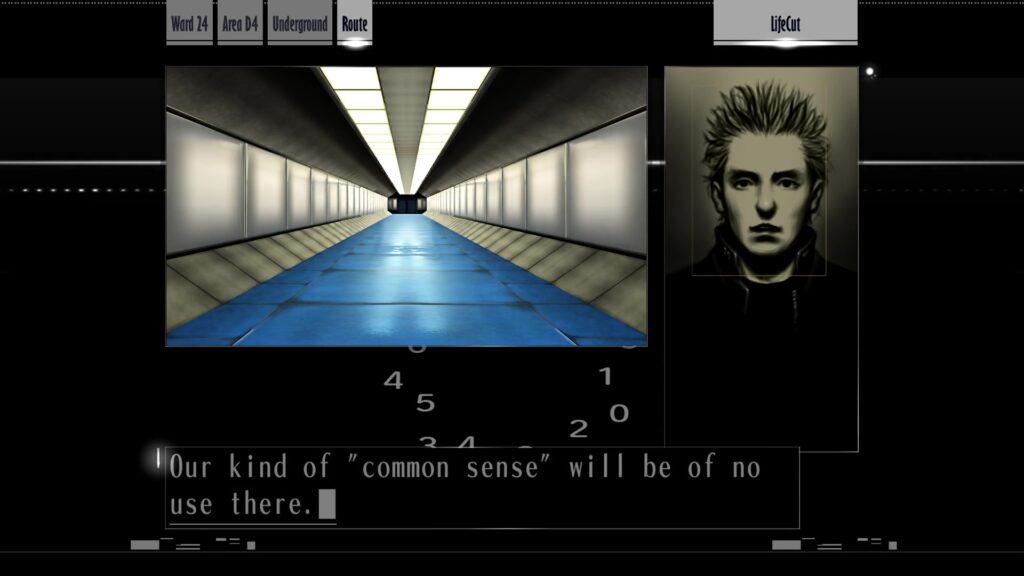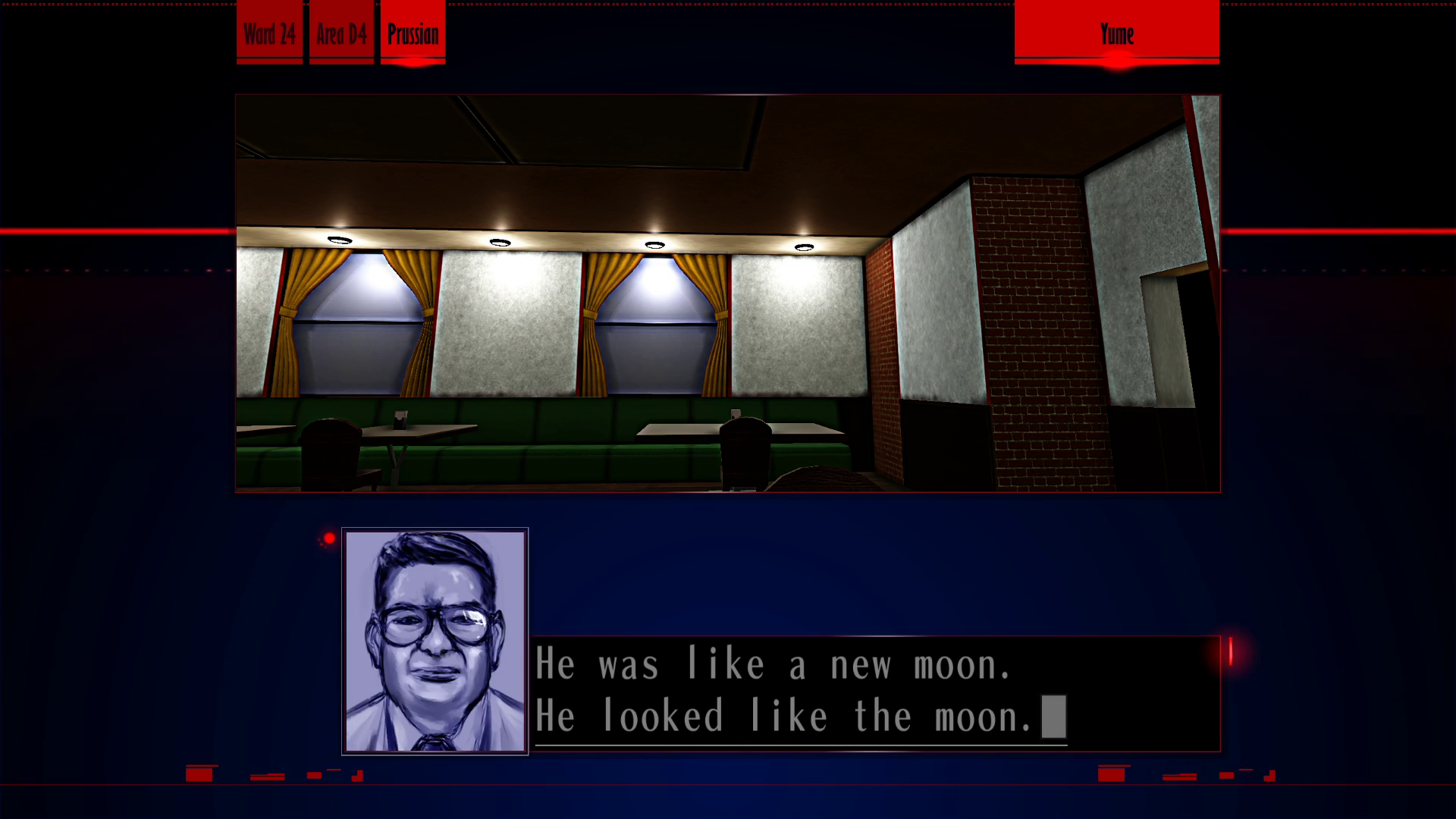The voiceless
Despite his centrality to the plot, in The Silver Case, Kamui never speaks for himself. A possible dialogue portrait (in the screenshot below) appears in “Decoyman” on an otherwise empty screen for only a few moments before fading away.

As well as his life, Kamui also loses his story, his voice, to the oligarchs who dehumanize him, stripping him of his name, background, and history. The onus falls on the player to give a voice to that face. To do so, we depend, a little like studying history from primary source documents, entirely on the other characters’ Rashomon of contradictory interpretations and recollections and the “truths” various powerful political and economic forces manipulate.
Further complicating the situation is the existence of Ayame. Enzawa, though an unreliable source, calls her “closer to Format Kamui than anyone else.” I take Ayame to be basically the same as Kamui, merely assigned to another gender. “HIKARI,” Shimohira Ayame, channeled through Tokio, writes, “a girl was used for ‘Ayame’ in order to differentiate her from Kamui. They simply switched genders.” The distinction is irrelevant enough that “biological male” bodies can be Ayame, as Meru and, arguably, Kei Nanami demonstrate.

Warning the HC Unit of the complications of the Kamui Case in “Decoyman,” Nakategawa tells them, “Go ahead and toss ‘common sense’ right out the window for this.” As this analysis bears out, he is honest on at least one point, agreeing with Tokio when he warns the player of the dizzying “facts” of the Triangle Towers: “From here on out, it’s a different world. Our kind of ‘common sense’ will be of no use there.”
On the level of literal interpretation, a largely coherent account might be possible. However, an interpretation that primarily emphasizes “lore” or the literal, logical links between moments without emphasis on their meaning or an understanding of symbolic and metaphorical associations would show a fundamental misunderstanding of The Silver Case, just as doing so would in the analysis of Lost Highway, a film that influenced its creators.
The Silver Case and especially its sequels subvert this level of understanding, thwarting the efforts of canon-codifying wiki editors. Any question answered will reveal additional information that contradicts the rest. The Bat is Enzawa, but months after Enzawa’s death in “AI,” Tokio receives another email from “The Bat.” Although the Shelter Kids Policy fails to produce silver eyes, Fujiwara has silver eyes. Although Uehara Kamui had one silver eye, Uminosuke extracted two silver eyes from him. Shimohira Ayame is 26 in 1999 but four years old in 1984. Mithra seems plausibly associated with Kamui: he has silver eyes, regenerative powers, is linked to the moon, and causes people around him to become possessed by criminal power in a destructive, gruesome manner, possibly calling Kamui’s liberatory potential into question.

In “UTSUTSU,” Meru’s memo calls the story of Kamui “so complicated and incoherent as to be almost nonsensical.” These and other tensions reflect the manipulation of narrative and counter-narrative and metanarrative that various power brokers, organizations, and individuals execute throughout The Silver Case and the Kill the Past series. A hermeneutics of symbolism, metaphor, association, emotion, and even mysticism is necessary to properly understand the narratives, as more obvious forms of understanding fail before the conspiracies of the absurd, pervasive international consortium ELBOW, whose power poisons all society and culture. Throwing common sense out the window to dig into these esoteric narratives enveloping Kamui/Ayame can reach the heart of The Silver Case’s political messaging. In doing so, I am not quite sure whether I will reveal surprising insights or instead come across as a rambling crackpot, but this is the risk when entering into places where common sense is of no use.

What Kamui/Ayame represents shifts substantially from The Silver Case to The 25th Ward and their American counterparts in killer7. The No More Heroes series changes Kamui into functionally a different character. These later interpretations of Kamui have little bearing on the Kamui/Ayame of The Silver Case, but I will touch on these as well. Unfortunately, due to the language barrier, I cannot comment on any potential Kamui/Ayame references, appearances, or parallels that could exist in Blood+: One Night Kiss or Liberation Maiden: SIN. But I have no reason to expect Kamui/Ayame is in One Night Kiss.